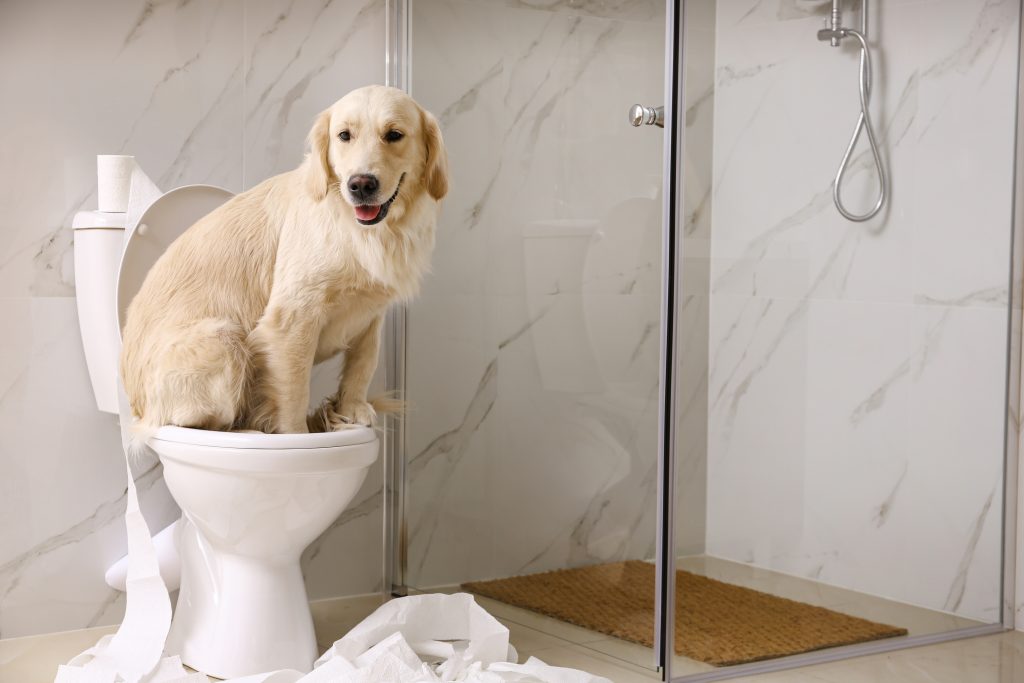Did you know that approximately 14% of dogs will experience a urinary tract infection, or UTI, at some point during their lives? UTIs are one of the most common infections that dogs deal with, and they can be exceptionally painful.
As a pet parent, you don’t want your dog to experience unnecessary pain, especially if it can be prevented. So we have put together this guide to help you understand the causes and symptoms of doggy UTIs and help prevent them from happening to your furry friend.
What is a Urinary Tract Infection?
A urinary tract infection occurs when bacteria travel up the urethra and into the bladder, which is meant to be a sterile part of the body. The bacteria multiply within the urinary tract and bladder and causes infection. When the exposed area around your dog’s genitalia comes into contact with bacteria from urine, faces, and other sorts of debris, an infection can happen. The most common culprit causing UTIs is the E. coli bacteria.
UTIs can occur within animals and humans. But unlike humans, your dog won’t be able to tell you when it is experiencing a painful UTI, so make sure to keep an eye out for symptoms.
Dog UTI symptoms to look out for
Often dogs with UTIs are asymptomatic. However, if you suspect your dog has a UTI, look out for the following symptoms:
- Drinking much more water than usual
- Urinating more than usual
- Having accidents when previously housetrained
- Cloudy or bloody urine
- Loss of appetite
- Fever
- Licking genital-area
- Struggling to urinate or showing discomfort while urinating
- Urine that has a strong odour
- Lethargy
If you notice any of these symptoms, don’t ignore them because UTIs have the tendency to progress into bladder or kidney stones.
Which dogs are more likely to get a UTI?
Some dogs are more susceptible to contracting UTIs than others. So if your dog falls into one of the following categories, please be extra vigilant in looking for UTI symptoms:
- Very young
- Elderly
- Female (as female dogs have a shorter urethra, so it is easier for the bacteria to reach the bladder)
- Spayed
- Immunocompromised
- Has chronic kidney disease
- Has Cushing’s disease
- Has arthritis
- Diabetic
How to prevent UTIs in dogs
The good news is that UTIs are preventable. Here’s are some ways you can help prevent your dog from developing a UTI:
- Make sure that your dog has clean water each day to flush out bacteria that’s built up in the urinary tract.
- Keep your dog well-groomed, especially around the genital area, and bathed regularly. This will help prevent the bacteria from entering the urinary tract.
- Be sure your dog isn’t holding in its urine for too long by providing it with regular access outside to take bathroom breaks.
- Feed your dog a well-balanced diet.
- Give your dog a bladder health supplement containing vitamins and antioxidants to fight infections. We recommend Zesty Paws Cranberry Bladder Bites, which contain a cranberry extract, an antiseptic to flush out bacteria, as well as many other infection-fighting ingredients like Organic Marshmallow Root & Astragalus.
- Visit your vet routinely so that symptoms can be detected early on.
When to seek vet help
So while there are measures you can take to prevent your dog from getting a UTI, if your dog displays any symptoms of a UTI it is essential to take it to the vet. At the vet, your furry friend will receive the antibiotics and care it needs to beat the infection. An untreated UTI could eventually lead to much more severe complications and even kidney disease.
Support your dog’s urinary and bladder health by focusing on preventative methods. Order Zesty Paws Cranberry Bladder Bites now.
Sources
https://www.smalldoorvet.com/learning-center/medical/utis-in-dogs
https://vcahospitals.com/know-your-pet/urinary-tract-infections-utis-in-dogs
https://iheartdogs.com/how-to-prevent-detect-urinary-tract-infections-in-dogs/
